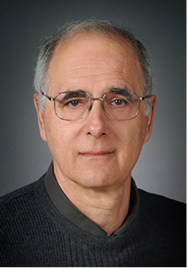Need Help?
21 April 2022
Prof. Dr. Stephen H. Safe Appointed Founding Editor-in-Chief of Receptors

We are pleased to announce that Prof. Dr. Stephen H. Safe has been appointed founding Editor-in-Chief of the new journal Receptors.
Prof. Dr. Stephen H. Safe is a Distinguished Professor at the Texas A&M’s Department of Veterinary Physiology and Pharmacology. He obtained his DPhil from Oxford University in 1965. He carried out his postdoctoral research at Oxford University and Harvard University from 1966 to 1968.
He has pioneered research in the toxicological field. His laboratory was one of the earliest implementers of cell and biology techniques to investigate mechanisms of chemical toxicity. His research on receptors initially focused on toxic ligands that bound and activated the arylhydrocarbon receptor (AhR) and he went on to study selective AhR modulators that are beneficial or repurposed for the treatment of various diseases, including cancer. He has also carried out research on PPARg and its ligands and on the molecular biology of estrogen receptor alpha (ESR1), its activation and targeting. Most of his current research is focused on the development and applications of ligands for two orphan nuclear receptors, NR4A1 (Nur77) and NR4A2 (Nurr1).
He has received many awards in recognition of his teaching and research. He has published five books and over 800 peer-reviewed scientific papers in leading journals.
The following is a short Q&A with Prof. Dr. Stephen H. Safe, who shared his vision for the journal with us, as well as his views on the research area and open-access publishing:
1. What appealed to you about the journal that made you want to take the role as its Editor-in-Chief?Receptors are highly complex and diverse and play an important role in maintaining cellular homeostasis and in pathophysiology. Thus, there are opportunities for enhancing health through precision targeting of specific receptors, and a journal that encompasses this field will contribute to an important area of the life sciences.
2. What is your vision for the journal?My vision for the journal is to provide a venue for both review and original articles on receptors that will serve the reader in terms of their quality and content. Hopefully, in the future, the journal Receptors will be an important resource for both authors and readers.
3. What does the future of this field of research look like?We express hundreds of receptors, many of which have not been fully characterized and others for which endogenous ligands have not been identified. The future of receptors and their functions will be exciting and will feature many new discoveries.
4. What do you think of the development of open access in the publishing field?Open access to published manuscripts is essential, but this should not be accompanied by “open-ended” increases in publishing costs to authors. This seems to be the case for many journals which seem to forget that funding for grants and publications is increasingly competitive and difficult to obtain.
5. What got you interested in scientific research in the first place?My initial scientific interest was in geology, but a summer job in a uranium mine in northern Ontario convinced me to switch to another field. Subsequent summer undergraduate employment with Chemistry Professor Moir at Queens University in Canada was exciting, and I was able to not only publish a paper as an undergraduate, but I met my wife, who was also an undergraduate summer student in the same laboratory.
6. What developments are occurring in your field of expertise that excite you at this time?Part of my research is now focused on development, mechanism of action and potential clinical applications of synthetic ligands for two orphan nuclear receptors, namely NR4A1 (Nur77, TR3) and NR4A2 (Nurr1). New functions for both receptors in multiple tissues are being discovered, and since they are stress/inflammation-induced genes, they are becoming important drug targets for multiple diseases. Thus, we are collaborating with colleagues in multiple fields with a goal of identifying lead compounds for clinical applications.

